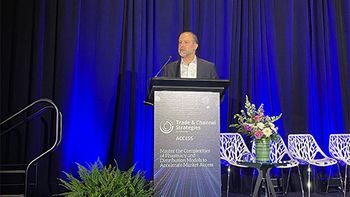
- Pharmaceutical Commerce - November/December 2011
Hospital supply chain participants are gradually taking up GS1 'sunrise' standards
December 2010 and December 2012 dates for adopting GLN and GTIN codes mark steady, if slow, progress
A couple years ago, hospital group purchasing organizations (GPOs) adopted a voluntary goal of applying GS1 standards to their contracts and ordering processes during 2010 and 2012, calling it the “sunrise” program (as in, “A new day is dawning…”). The sunrise goals were widespread adoption of GLN (Global Location Number) for identifying specific facilities (i.e., warehouses or pharmacies) by Dec 31, 2010, and GTIN (Global Trade Item Number) for identifying specific products by Dec. 31, 2012. An annual survey conducted by the Univ. of Arkansas Center for Innovation in Healthcare Logistics (CIHL; Fayetteville, AR) finds that awareness of the sunrise standards is high (82%); that planning to implement data standards is slightly higher in 2011 than in 2010 (71% vs. 68%), and that GPOs are farthest along in actually doing the GLN implementations (66% use GLN in some or all appropriate transactions, as compared to 38% of manufacturers, and 22% of providers).
The upcoming GTIN date is expected to be met by 63% of GPOs, 43% of manufacturers, and 25% of providers—but across the board of all respondents only 31% are committed to that goal. Year-over-year comparisons of these commitments are somewhat difficult to discern because the survey base has dropped by nearly two-thirds. However, according to one of the researchers, Edward Pohl, PhD, the likelihood is that the bigger manufacturers, GPOs and providers are better staffed and capitalized to take on the conversion, so that a higher percentage of overall healthcare supply chain transactions will be conducted using the GS1 standards.
Originally, the leading GPOs stated that they would not accept transactions from suppliers (i.e., manufacturers) not using the GLN and, soon, GTIN definitions, but that is obviously a goal, rather than a requirement. GLNs and GTINs are designed to make transactions more automation-friendly; when exact locations and exact product identifiers can be agreed on, less reconciliation of transaction details need to be reconciled. GLN and especially GTIN are also a preamble, of sorts, to item-level serialization of pharmaceutical products; the GTIN can actually be incorporated into the unique identifier of an item.
The survey is sponsored by the Healthcare Industry Supply Chain Institute (
Articles in this issue
almost 14 years ago
CMS issues Sunshine Actalmost 14 years ago
More actions by GPhA and Obama Administration to address drug shortagesalmost 14 years ago
Cold Chain Technologies extends ambient-temperature packaging lineabout 14 years ago
UPS Healthcare Logistics adds to network with an Italian acquisitionNewsletter
Stay ahead in the life sciences industry with Pharmaceutical Commerce, the latest news, trends, and strategies in drug distribution, commercialization, and market access.





